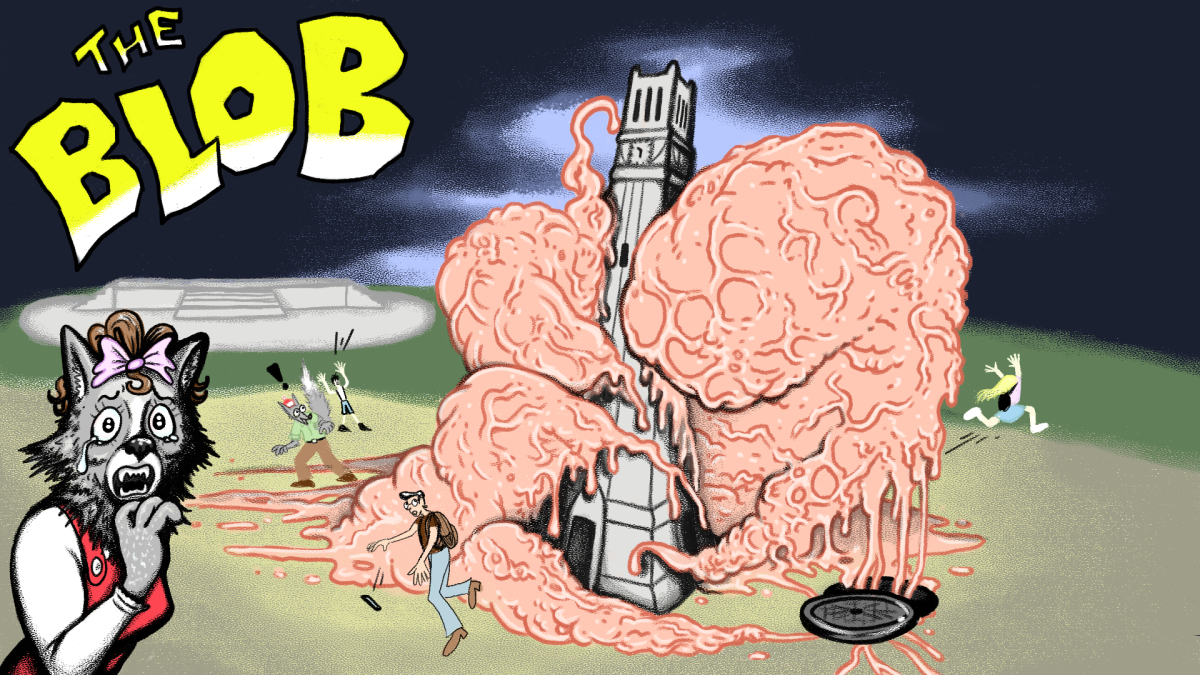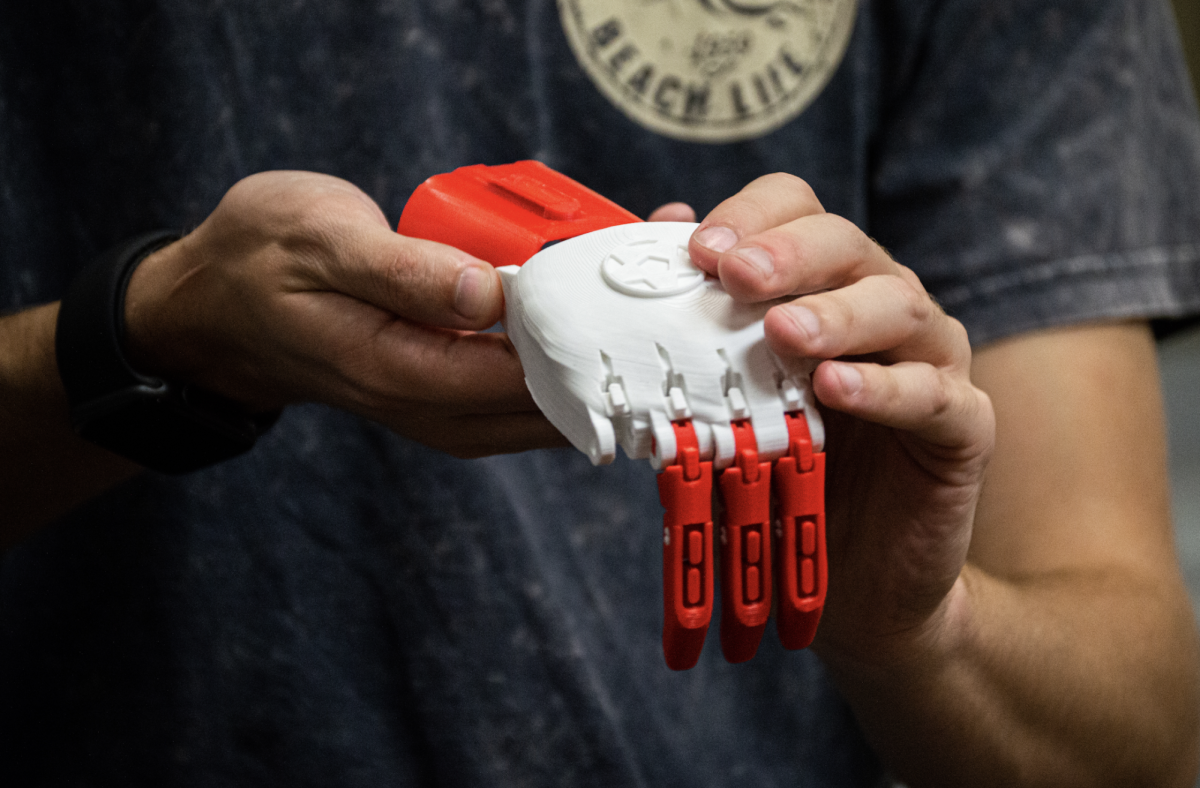In April 2009, a routine sewer inspection beneath Raleigh’s Village District revealed something alarming — pulsating, beating slimy masses clinging to the inside of a six-inch pipe. The footage, captured by a robotic camera inspecting the aging sewer system, quickly went viral across the internet and sparked a mix of fascination, fear and scientific debate that still persists today.
At first glance, the mysterious blobs looked like something straight out of a 1950s horror movie, drawing comparisons to the iconic creature from the 1958 film “The Blob.” Social media and cryptid forums buzzed with theories ranging from mutant sewer monsters to extraterrestrial life forms.
But what exactly are these blobs lurking in the darkness under the Village District?
Ed Buchan, then an environmental coordinator with the City of Raleigh, remembers the moment the footage first came to his team’s attention.
“Typically, when you’re inspecting sewers, it’s not that unsurprising to see rats, roaches, snakes, a lot of insects, things like that,” Buchan said. “But this particular piece of video was highly unusual. Most of our staff at that time had not seen something like that.”
Buchan explained that the sewer system under Village District is privately maintained, unlike much of Raleigh’s public sewer network which is cleaned regularly with high-pressure water jets and mechanical augers to prevent blockages. This private system, built in 1949 with older clay pipes, doesn’t receive the same routine cleaning.
“None of us had a good explanation for it, which is how you get a cryptid when you don’t have a ready explanation for it,” Buchan said. He said experts initially claimed that the blobs are colonies of tubifex worms, sometimes called “sludge worms,” which are normally found in ponds and sold as fish food.
But not everyone agrees with the tubifex worm explanation. Todd Sink, an associate professor and aquaculture extension specialist at Texas A&M University, believes the blobs are colonies of bryozoans — small aquatic animals that live in dark, nutrient-rich environments, rather than tubifex worms, which he said would be smaller than what was present in the video and would have distinct “spaghetti-like masses.”
“When you’re looking at this, you’re looking at literally thousands of organisms, and each one has feeding mouthparts and grasping, so each one is able to move on its own,” Sink said.
These filter feeders are typically indicators of good water quality, Sink said, and they’re commonly found in freshwater and marine habitats worldwide. He said tubifex worms are more likely to thrive in sewers and was surprised to see what he saw as bryozoans there. Their pulsating movement in the sewage pipes is likely a reaction triggered by sudden light exposure.
“It’s kind of very surprising for me to see them in a sewage system,” Sink said. “Never heard of that one before. I don’t know how they ended up there. That colony appears to be thriving. But because they are animals and they feed on little particles in the water, they don’t really need sunlight.”
Sink said as part of his job, he responds to pond management calls, where he gets concern calls about bryozoan sightings multiple times a year. He said Texas has 1.3 million ponds, and that he regularly receives reports of “weird, unexplained” things.
“Most people think they’re frog egg masses, that’s a pretty common one, or salamander eggs,” Sink said. “But if you look at them, they don’t actually have the dark spot in them — it’s the developing embryo. So they’re pretty easy to distinguish, but most people just don’t know what they are.”
Sink said the setting and context surrounding the blobs’ sighting are what triggered such reactions, not the animals themselves.
“You send a small camera down into a dark sewer pipe where you’re not expecting to find a blob, let alone an undulating blob or anything living there,” Sink said. “So it’s just that aspect of what is this thing and what is it doing down here? And so people’s minds automatically go to, is this a science experiment gone wrong? Has somebody poured chemicals down here that’s created some kind of monster chemical reaction? When in reality, these things do exist, and so the reaction to them when people find them in their natural environments out in lakes and rivers is more curiosity. It’s not fear or disgust.”
Buchan said a possible explanation for the creatures’ arrival in the sewers is tree root intrusion. Root intrusion is a common issue for sewage systems, as roots are naturally attracted to the water and the nutrients, or human waste, inside them, resulting in cracks in the system.
Still, 16 years later, Buchan, now environmental assistant director for the city, said this issue weighs on his mind, as there has never been a concrete explanation for what the blobs are.
“Since then, I’ve never heard of this being an issue in other systems,” Buchan said. “I’ve asked a few times at various conferences, and perhaps they don’t work as closely with their camera crews, and we have TV crews that go around and do this, so maybe they see them more regularly and just never really say much about them.”
With tubifex worms and bryozoans being harmless, Raleigh never directed York Properties, who manages the property, to clean the system. Buchan said the city regularly cleans its systems out, but smaller, independent systems like the Village District’s are out of Raleigh’s jurisdiction.
“The city of Raleigh wasn’t very concerned,” Buchan said. “These were harmless animals, so nothing was ever done about them, really.”





